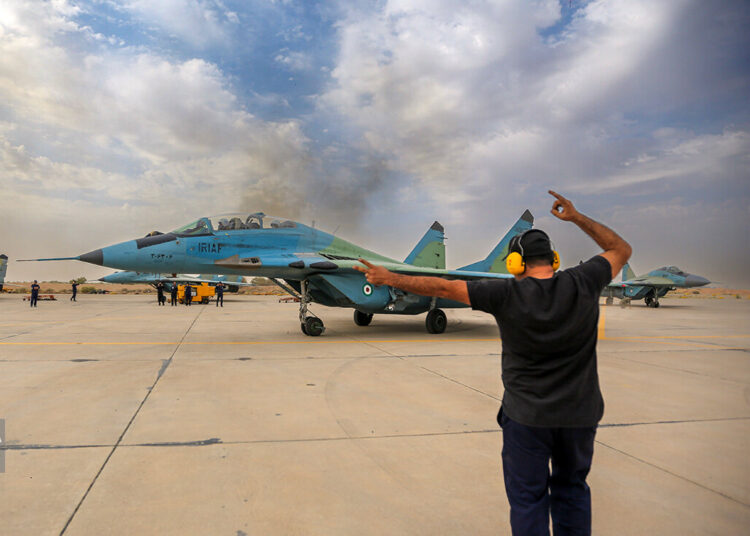In a tit-for-tat stance towards the United States’ recent declaration to bolster military deployment and deterrence provisions in the Persian Gulf, Iran has reciprocated by augmenting its own martial capabilities.
Iranian Defense Minister, Mohammadreza Ashtiani announced during a formal ceremony the impending addition of the “Abu Mahdi” sea cruise missile to Iran’s naval forces. In congruence with the defense doctrine of the Islamic Republic, this enhancement aims to elevate Iran’s missile and defensive armaments, as per the Defence Minister’s pronouncements.
The features of Abu Mahdi missile include precise-strike aptitude, destructive force, and navigation around maritime terrains, penetrating layered air defense systems, thereby expanding Iran’s naval defense coverage in its territorial waters and beyond.
Claiming the distinction of being armed with artificial intelligence in trajectory definition and command-and-control systems, the missile is capable of swift, low-altitude radar-evading man oeuvres, revising its path, and elevation whilst airborne.
Further emphasizing the spectrum of the missile’s performance, IRGC Navy Commander Rear Admiral, Ali Reza Tangsiri, pinpointed that this new asset would prompt adversary aircraft carriers to maintain a safe distance of 2,000 kilometers from Iranian coasts, rendering the warships’ fighter jets virtually redundant.
He explained that if an Iranian military vessel travels at a distance of 1,000 kilometers from the country’s coasts and launches the Abu Mahdi, the enemy’s aircraft carrier will have to retreat at least 1,000 kilometers farther away to evade the long-range cruise missile, so the fighter jets on board the aircraft carrier will be rendered useless.
Additionally, Iran hosted its 11th “air superiority” military exercise recently, seemingly a tactical response to a joint exercise conducted by the US and Israel two weeks prior where they had reportedly exercised striking Iran. During this exercise, Iran demonstratively deployed drones for bombardment and reconnaissance purposes endowed with an operational range of 2,000 kilometers, capable of penetrating into the occupied territories to undertake offensive or reconnaissance assignments.
A noteworthy element of the exercise was the execution of aerial refueling operations over the Persian Gulf islands – a signal bearing in mind the preceding disputes related to three Iranian islands as elicited in the statements by Russia and China jointly with the Persian Gulf states.
The maritime stalemate between Iran and the United States in the Persian Gulf, among other global locales, has acquired new dimensions in recent months.
The United States has conveyed its intentions to dispatch additional warships, thousands of Marines, an array of F-16 fighter jets, the destroyer “USS Thomas Hudner”, and a number F-35 jets to the Persian Gulf in an attempt to thwart Iran. US Defense Secretary Lloyd Austin, on July 20, approved the deployment of the USS Bataan amphibious readiness group and the 26th Marine Expeditional Unit to the Persian Gulf.
American officials have purported these airborne fighters are intended to furnish overhead protection for vessels cruising through the strategically vital shipping artery, the Strait of Hormuz. This move, it is contended, stems from Iran’s seizure of American oil tankers.
Iran swiftly retorted to these pronouncements. Iranian military officials issued their own warnings against American “provocations” in the Persian Gulf. On July 19, Iranian Defense Minister, Brigadier General Mohammad-Reza Ashtiani, stated, “The Islamic Republic is in a phase of authority and capability where it stands immune to threats.”






